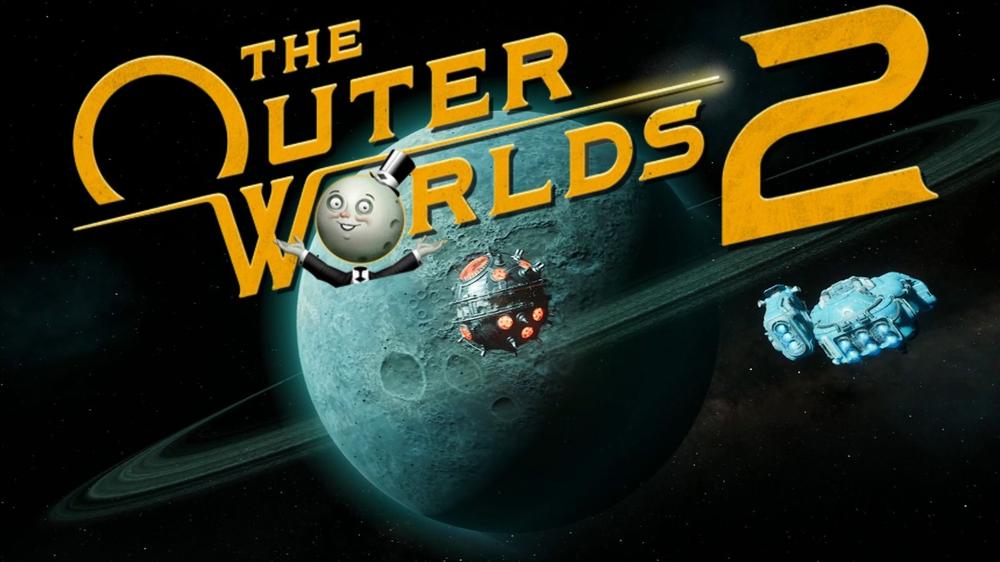The Outer Worlds was this writer’s gateway into RPGs. Its dystopian world was appealing, but the slower pace and whimsical nature of the story made Obsidian’s 2019 adventure feel more accessible than the vast world of Fallout.
I wasn’t the only person to fall for its charms with its wacky guns, silly story, and unique atmosphere as you walked into a space station plastered with adverts. It literally is out there. So, six years on, the anticipation is high for The Outer Worlds 2, and the good news is that it still has the same atmosphere that made fans fall in love with it in the first place.
However, it’s hard not to be disappointed by a game that takes ages to get going and has one fatal Flaw.
The Outer Worlds 2 screenshots
What is The Outer Worlds 2 about?
Set in the Arcadia star system, you play as a Commander in the Earth Directorate, a group of Space Sheriffs, who keep order among the corporations. After a mission goes wrong, you flee into a cryopod and wake up years later in Arcadia.
Only this time, a familiar face has reared its head, opening universe-destroying rifts as part of the ‘grand plan’. It’s up to you to find them and get revenge while destroying that grand plan for good.
Full of The Outer Worlds charm
The Outer Worlds 2 is almost a carbon copy of its predecessor, and that’s not a bad thing. It’s got the same slower but enjoyable Fallout-style combat, where careful aiming and stealth are key, and retains the same wacky worlds and unserious overarching tone.
The story, setting, and ability to merge the silly and serious are where this sequel shines. Yes, the questlines are daft, but if you fail, the consequences are deadly. It doesn’t take itself seriously, which is good because the story is complex, and The Order Faction’s scientific language verges on being overly complicated. It’s an adventure that’s filled with brilliantly bizarre moments, like smacking a giant robot with your lightning hammer while listening to a musical advert about drinking purple Tequila for breakfast.
The Outer Worlds 2’s universe feels more alive than ever. The star system’s corporations have merged and are fighting among themselves on each planet, making it feel like there is always something going on beyond staring at amusing adverts. They are still there, of course, but there is more combat with every planet featuring its own battlefield containing two factions fighting to get hold of landmarks.
This is an improvement from the first game. Now, Arcadia is buzzing with tension, alliances, and, of course, so many adverts. With all this being explained through brilliant cinematic cutscenes, this is a serious glow-up from the first game’s already beautiful locations.
Then there’s the combat. Just like Fallout, The Outer Worlds 2 has a slower fighting style, which enables you to battle depending on your preferences. Regardless of whether you choose to play melee, ranged, or a mixture of both, there are easily 20 weapons that work perfectly, and each enemy calls for a different tactic. That slower, more methodical, and forgiving fighting style is extremely welcome when there are so many weapons to explore.
Frustrating features
It all sounds brilliant, but unfortunately, the sequel lets itself down with a few lackluster features and a main questline that would make any Space Sheriff consider wiping out a planet so they can stop looking for an item.
It feels like the quests and main story were written by two different teams. The early game is filled with frustrating rinse-and-repeat quests, which often force you to choose a skill or grab an item so you can progress through a quest.
One example comes early on, when you’re given three choices: fight through a building, side with one of two factions, or talk your way past an NPC. The first demanded high skill checks, the second required rare purple cereal I still haven’t found, and the last meant killing everyone in sight. It’s this artificial sense of choice that made the first half of the story predictable and frustrating.
However, the second half picks up massively. The stakes are raised as the rifts get closer to destroying Arcadia, and the gameplay is more choice-oriented with copious amounts of consequences to your actions, like whether you choose to spare or kill a vital NPC. It’s engaging and lives up to its predecessor wonderfully. It is wonderful and makes you wish the whole game would be like this.
Then there are the Flaws, a returning feature from the first game that offers a drawback to your character for a small bonus. Previously, taking one granted you an extra perk, but that’s no longer the case. In The Outer Worlds 2, each Flaw now gives you both a bonus and a drawback. For example, you might lose the ability to revive a companion, but gain a full skill bar whenever another goes down.
However, none felt worth committing to, as all had more negatives than positives. The Flaws that were chosen almost destroyed the enjoyment of the game, as they were so harsh. It’s a wonderful idea, but in practice, there’s no reason to choose them, making it more of an inconvenience than the star feature Obsidian has been promoting.
Verdict
After waiting six years for another crack at The Outer Worlds, it feels disappointing to be met with a sequel that is so promising but marred by a poor first half and frustrating Flaws
The game isn’t a total flop, however. It’s saved by its whimsical charm, vivid dystopian subject matter, and the classic, slower, and more explorative Fallout: New Vegas design that Obsidian games have perfected.
Had it got off to a great start and been more consistent from start to finish, you’d be looking at an all-time classic. Instead, we have something that is probably worth playing for fans of the original, but will be fun and frustrating in equal measure.

 La nuova Omoda 4 diventa più "cattiva" con la versione Ultra
La nuova Omoda 4 diventa più "cattiva" con la versione Ultra